Consumer Proposal
About Consumer Proposals
Managing debt can feel overwhelming, especially when it becomes difficult to stay on top of payments. For Canadians struggling with financial challenges, a consumer proposal offers a viable alternative to bankruptcy and other debt relief solutions. But what is a consumer proposal, and how can it help you regain control of your finances? Let’s explore the consumer proposal process, its advantages, and how it compares to other debt management options.
We’ll take the time to understand your full financial picture and clearly explain your options — whether it’s a Consumer Proposal, Bankruptcy, or another debt relief solution. No pressure, no judgment — just honest, professional advice you can trust.

Finding the Best Consumer Proposal Company
Choosing the right Licensed Insolvency Trustee is a critical step in regaining control of your finances—and we’re here to make that process as smooth and empowering as possible. Our deeply personalized and respectful approach to debt relief sets us apart. We don’t just process bankruptcies and consumer proposals; we guide you through every step with empathy, clarity, and a genuine commitment to your long-term financial well-being.
Our service is shaped by honest feedback from clients and partners, ensuring that our support isn’t just professional—it’s human. We take the time to understand your unique situation, present your options in plain language, and deliver solutions that align with your personal and financial goals. Whether you’re considering bankruptcy or exploring alternatives like a consumer debt proposal, we help you confidently make informed decisions.
Is a Consumer Proposal Right for You?
Deciding between a consumer proposal and other debt management options can be challenging. Your choice will depend on factors like your income, assets, and overall financial goals. If you’re considering a consumer proposal, consulting with a Licensed Insolvency Trustee is the best starting point to receive consumer proposal benefits. We are a federally regulated professional; our insight, experience, and expertise can help you build a path toward financial stability.

Consumer Proposal CRA
Dealing with debt is stressful, but when the Canada Revenue Agency (CRA) is your creditor, the pressure can feel immense. The CRA has powerful tools to collect unpaid taxes, including wage garnishments and freezing bank accounts. If you’re facing overwhelming tax debt, a consumer proposal CRA can provide a structured, legal pathway to relief. The best way to determine if this is the right path for you is to speak with a Licensed Insolvency Trustee like us. We are the only professionals legally authorized to administer consumer proposals CRA and can provide expert, unbiased advice tailored to your unique situation.
The FAQ Section
A consumer proposal is a legally binding agreement between you and your creditors. Overseen by a Licensed Insolvency Trustee, it allows you to repay only a portion of your debt, interest-free, based on what you can afford. Your remaining debt is forgiven, offering significant relief.
The consumer proposal is tailored to those who want to avoid bankruptcy while finding a structured path toward debt relief. Unlike bankruptcy, a consumer proposal lets you keep your assets, such as your home, car, and investments, as long as you continue to make payments as agreed.
Benefits of a Consumer Proposal
Opting for a consumer proposal comes with several advantages. Here are some key consumer proposal benefits that make it an attractive option:
- Debt Forgiveness Program
A consumer proposal agreement can drastically reduce your debt. You might only pay back a portion of what you owe, with the rest being forgiven. For example, instead of repaying $30,000 in unsecured debt, you could negotiate to pay back $10,000, interest-free, over several years.
- Protection From Creditors
Once the consumer proposal process begins, creditors must stop all collection efforts, including phone calls, wage garnishments, and legal actions.
- Retain Your Assets
Unlike bankruptcy, assets do not vest with the trustee. A consumer proposal lets you keep your assets, making it a safer option if you own property, an RRSP, an RESP, or a vehicle.
- Structured Payments
With a consumer proposal, you’ll agree to manageable interest-free monthly payments spread over five years or less. This predictability can help you plan your finances more effectively.
- Rebuild Your Credit
While a consumer proposal does impact your credit score, it is seen as more favorable compared to bankruptcy. You can start rebuilding your credit score as soon as the consumer proposal has been approved.
Bankruptcy and Consumer Proposals Are Complex Legal Processes — We’re Here to Help
We understand that navigating debt solutions like bankruptcy or a consumer proposal involves legal, financial, and
procedural complexities that can feel overwhelming. Each situation is unique, and understanding your
rights, responsibilities, and options is essential. That’s why speaking with a Licensed Insolvency Trustee
(LIT) is your best first step. Book your free consultation now
A consumer proposal is a legally binding agreement between you and your creditors facilitated by a Licensed Insolvency Trustee. Here’s a step-by-step guide to the consumer proposal process:
- Consult a Licensed Insolvency Trustee
You’ll meet with our Licensed Insolvency Trustees, who will assess your financial situation. We will review your income, debts, and expenses to recommend a practical debt proposal.
- Develop the Proposal
Together, we will create a customized plan detailing how much of your debt you can realistically pay. The goal is to offer creditors a reasonable repayment that works for your budget.
- Approval by Creditors
The proposal is submitted to your creditors for their approval. If accepted by the majority of the debt, the proposal becomes legally binding on all unsecured creditors after deemed court approval.
- Benefits of Filing a Consumer Proposal
Immediately after filing the proposal, legal and collection actions stop. Interest freezes, and collection agencies must halt their calls and legal action, including wage garnishment and eviction.
- Make Payments
Start making the agreed-upon monthly payments to the trustee, who will distribute the funds to your creditors.
- Achieve Debt Relief
Once you complete the terms of the agreement, any remaining eligible debts included in the proposal are fully forgiven.
The Benefits of a Consumer Proposal
Opting for a consumer proposal provides several advantages, including:
- Debt Forgiveness
You’ll only repay a portion of your debt, and the rest is forgiven once the plan is complete. For example, instead of paying $40,000, you might only pay back $15,000 ($250 x 60 months).
- Creditor Protection
Legal and collection activity, such as collection calls, court proceedings, and garnishment orders, must stop upon filing a consumer proposal.
Creditor protection includes CRA:
- The protection offered by the consumer proposal is also effective against the Canada Revenue Agency (“CRA”). Collection calls, bank account seizures, set-offs, and wage garnishments are stopped.
- No Loss of Assets
Unlike bankruptcy, a consumer proposal allows you to keep your home, car, and other personal assets.
- Affordable and Predictable Payments
Monthly payments are spread out over a maximum of five years, giving you a clear and manageable path forward.
- Rebuilding Financial Health
While your credit score will be impacted, this option is less damaging than bankruptcy and allows you to begin rebuilding credit sooner.
The Effect of a Consumer Proposal on your Credit
A consumer proposal is noted on your credit report as an R9 until paid in full and then will change to an R7 for 3 years after completion, showing the debt was settled and not written off. You are also able to take steps to rebuild your credit score while working to complete the proposal.
Bankruptcy and Consumer Proposals Are Complex Legal Processes — We’re Here to Help
We understand that navigating debt solutions like bankruptcy or a consumer proposal involves legal, financial, and
procedural complexities that can feel overwhelming. Each situation is unique, and understanding your
rights, responsibilities, and options is essential. That’s why speaking with a Licensed Insolvency Trustee
(LIT) is your best first step. Book your free consultation now
A consumer proposal is one of the most effective and accessible ways to manage debt in Canada. Below, we’ll answer common questions about who qualifies for this, including financial criteria, the consumer proposal steps involved, and how it compares to other debt management options.
Who is eligible to file a consumer proposal?
To qualify for a consumer debt proposal, you must meet the following criteria:
- Unsecured debt limit of no more than $250,000 (excluding mortgages).
- Ability to make payments as proposed in the agreement. This ensures creditors receive a portion of what they’re owed.
- A steady income allows you to meet monthly payments within five years.
- You have not previously had a consumer proposal annulled.
We will assess your financial situation to confirm your eligibility and design a consumer proposal tailored to your needs.
Do I need to have a specific income level?
There’s no minimum income requirement, but you must be able to make consistent payments as part of the agreement. We will calculate what’s affordable based on your income, expenses, and overall financial situation. This is one of the key consumer proposal benefits, as it ensures customized repayment terms while following the consumer proposal steps.
How is eligibility for a consumer proposal determined?
The consumer proposal process begins with a consultation:
- Our Licensed Insolvency Trustee will assess your financial standing, including assets, income, and outstanding debts.
- We will determine whether a consumer proposal, bankruptcy, or another debt solution is right for you.
- Based on this assessment, we will craft a realistic repayment plan for creditor approval.
Bankruptcy and Consumer Proposals Are Complex Legal Processes — We’re Here to Help
We understand that navigating debt solutions like bankruptcy or a consumer proposal involves legal, financial, and
procedural complexities that can feel overwhelming. Each situation is unique, and understanding your
rights, responsibilities, and options is essential. That’s why speaking with a Licensed Insolvency Trustee
(LIT) is your best first step. Book your free consultation now
Both are legal processes governed by The Bankruptcy and Insolvency Act of Canada and offer the ability for an unfortunate debtor to get a fresh start. The difference between bankruptcy and consumer proposals lies mainly in how assets are treated and how your debts are handled.
Consumer Proposal vs Bankruptcy Ontario:
If debt is weighing you down, you’re likely considering your options. As Licensed Insolvency Trustees in Ontario, we help people choose between Bankruptcy and Consumer Proposals—two powerful tools designed to eliminate debt and give you a fresh financial start.
Option 1: Consumer Proposal – Settle Debt Without Bankruptcy
A Consumer Proposal lets you legally reduce your debt and make affordable monthly payments—with no interest. It’s a great alternative to bankruptcy and protects your assets.
Key benefits:
- Pay back only a portion of what you owe
- No interest or hidden fees
- Keep your house, car, RRSPs, and more
- Stops all collection calls and legal action
- One low monthly payment, up to 60 months
✅ Avoids bankruptcy
✅ Ideal for those with income or assets they want to protect
Option 2: Bankruptcy – A Legal Reset When You Can’t Repay
Bankruptcy provides a clean slate when debt is simply unmanageable. It’s a federally regulated process that can eliminate most unsecured debts.
Key facts:
- Stops all collections and garnishments
- Discharges most debts after 9–21 months
- May involve surrendering some non-exempt assets
- Monthly payments based on your income
✅ Fastest route to debt elimination
✅ Best when you have low income or few assets
Not Sure Which is Right for You?
Let’s figure it out together. We’ll review your finances, explain your options, and help you make the best decision—free of charge and judgment.
A consumer proposal lets you keep your assets, such as your home, car, RRSP and RESP’s while consolidating and reducing your debts.
Bankruptcy may result in the loss of these assets, along with a longer-lasting impact on your credit score.
With a consumer proposal, creditors agree to partial repayment over time, while bankruptcy typically results in completely liquidating your financial obligations.
Bankruptcy and Consumer Proposals Are Complex Legal Processes — We’re Here to Help
We understand that navigating debt solutions like bankruptcy or a consumer proposal involves legal, financial, and
procedural complexities that can feel overwhelming. Each situation is unique, and understanding your
rights, responsibilities, and options is essential. That’s why speaking with a Licensed Insolvency Trustee
(LIT) is your best first step. Book your free consultation now
A consumer proposal is an innovative and effective way for Canadians to tackle their financial challenges. Before starting the process, it is essential to understand which debts qualify for inclusion in the proposal. Below, we answer common questions about the types of debts that can be included in a consumer proposal and those that cannot.
Types of debts included in a consumer proposal
A consumer proposal for debt primarily addresses unsecured debts, meaning these debts are not tied to collateral, such as a home or car. Examples include:
- Credit Card Debts
Struggling with unpaid credit card balances? A consumer proposal allows you to settle these debts affordably.
- Lines of Credit and Personal Loans
If you owe money on unsecured lines of credit or personal loans, these can be included in your proposal.
- Payday Loans
Short-term payday loans with high interest rates are also eligible.
- Tax Debts
Unsecured tax debts owed to the CRA, like personal tax, GST, and CERB, can be included. This makes a consumer proposal option particularly beneficial for individuals with outstanding government obligations.
- Rent Arrears
Are you behind on rent payments? Have you been served with an eviction notice? Arrears rent is considered an unsecured debt in a consumer proposal, and the Stay of Proceedings can stop an eviction and a landlord-tenant tribunal.
- Student Loans
Student loans are a complicated issue and can be understood by speaking with an LIT. Generally, you need to be out of school for 7 years to have student loans discharged completely in a bankruptcy or proposal. If less than 7 years, the student loans would still be included in the proposal, but the balance would be owed once proposal payments are complete.
Talk with our expert Licensed Insolvency Trustees – Get Clarity and Real Answers
Every financial situation is unique. When you speak with us, you’re not getting a generic solution — you’re getting expert guidance tailored to your specific needs.
We’ll take the time to understand your full financial picture and clearly explain your options — whether it’s a Consumer Proposal, Bankruptcy, or another debt relief solution. No pressure, no judgment — just honest, professional advice you can trust.
What You Can Expect:
- A clear explanation of your debt relief options
- Answers to your specific questions — no jargon, no confusion
- Support from a federally regulated professional who’s here to help
- A conversation that’s 100% confidential and commitment-free
Firstly, lets understand the difference in credit score impact between bankruptcy, a consumer proposal, and a debt
management program.
Each debt solution affects your credit differently, but all involve some short-term impact. Here’s a
breakdown:
Bankruptcy: Your credit report shows an R9 rating, the most serious level. This remains on your credit
report for 6 years after discharge (or longer for a second bankruptcy). Your credit score will drop
significantly but can be rebuilt over time.
Consumer Proposal: Starts as an R9 rating while active. Once completed, it is updated to an R7 rating.
It remains on your credit report for 3 years after completion.
Debt Management Program (DMP): Like a consumer proposal, a DMP is reported as an **R9 rating**
while in progress, and then updated to **R7** upon completion. It stays on your credit report for 2
years after you finish the program.
What do “R7” and “R9” mean on a credit report?
R9: This is the lowest credit rating and indicates a serious credit issue such as bankruptcy, a default, or
an active consumer proposal or DMP.
R7: This rating means you have made an alternative arrangement to repay your debt, such as through a
consumer proposal or credit counselling program.
How long does each option stay on my credit report?
Report Option | Initial Rating | Updated Rating after Completion | Removed from Credit Report |
Bankruptcy: R9 Initial Rating | R9 Completion Rating | Removed 6 years after Discharge
Consumer Proposal: R9 Initial Rating | R7 Completion Rating | Removed 3 years after completion or 6 from filing
Debt Management Program: R9 Initial Rating | R7 After Completion | Removed 2 years after completion
Which option is best for my credit?
There’s no one-size-fits-all answer. While debt management programs may disappear from your credit report
faster, consumer proposals offer legal protection from creditors and often a lower monthly payment. Bankruptcy is best for those with unmanageable debt or no ability to repay. Our Licensed Insolvency Trustees can explain your options clearly and help you choose the right path.
Need Help Deciding?
You’re not alone if you’re worried about how your debt affects your credit. We’re here to provide trusted, judgment-free guidance. Speak with a Licensed Insolvency Trustee today and get a plan tailored to your needs.
What Our Clients Say

Apart from the obvious services you provide, you have all been so respectful, gracious, patient and caring, making an unimaginable situation much more bearable. I learned a tremendous amount. I will always be grateful for the important skills you shared and for the compassion with which you treated me. I look to the future with much more optimism because of you. – Fiona

I can’t express how grateful I am for everything you’ve done. I really felt like I had people looking out for my best interest. You have gone above and beyond. You are all caring and kind. – Shennel

I can’t thank you enough for all you have done for me. I really appreciate all your help, knowledge and the respect you showed me and for giving me my dignity as a person back. – Linda
Contact Us
If you would like to ask us a question, please complete the quick form below.





